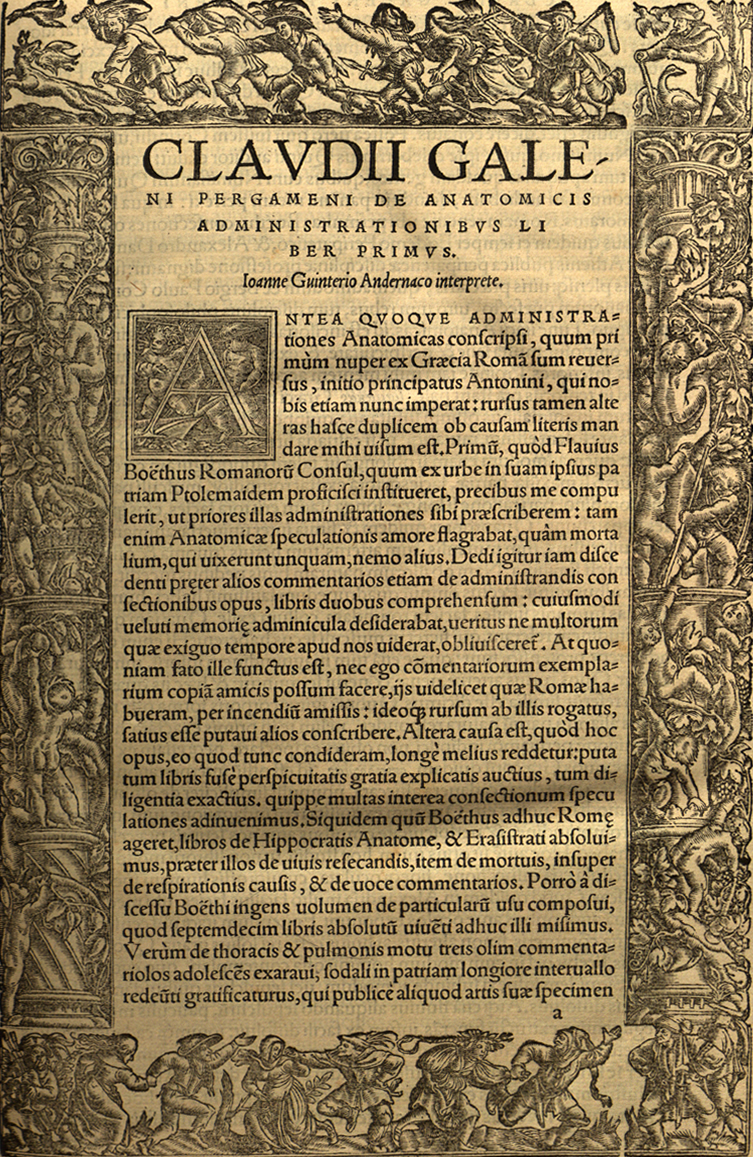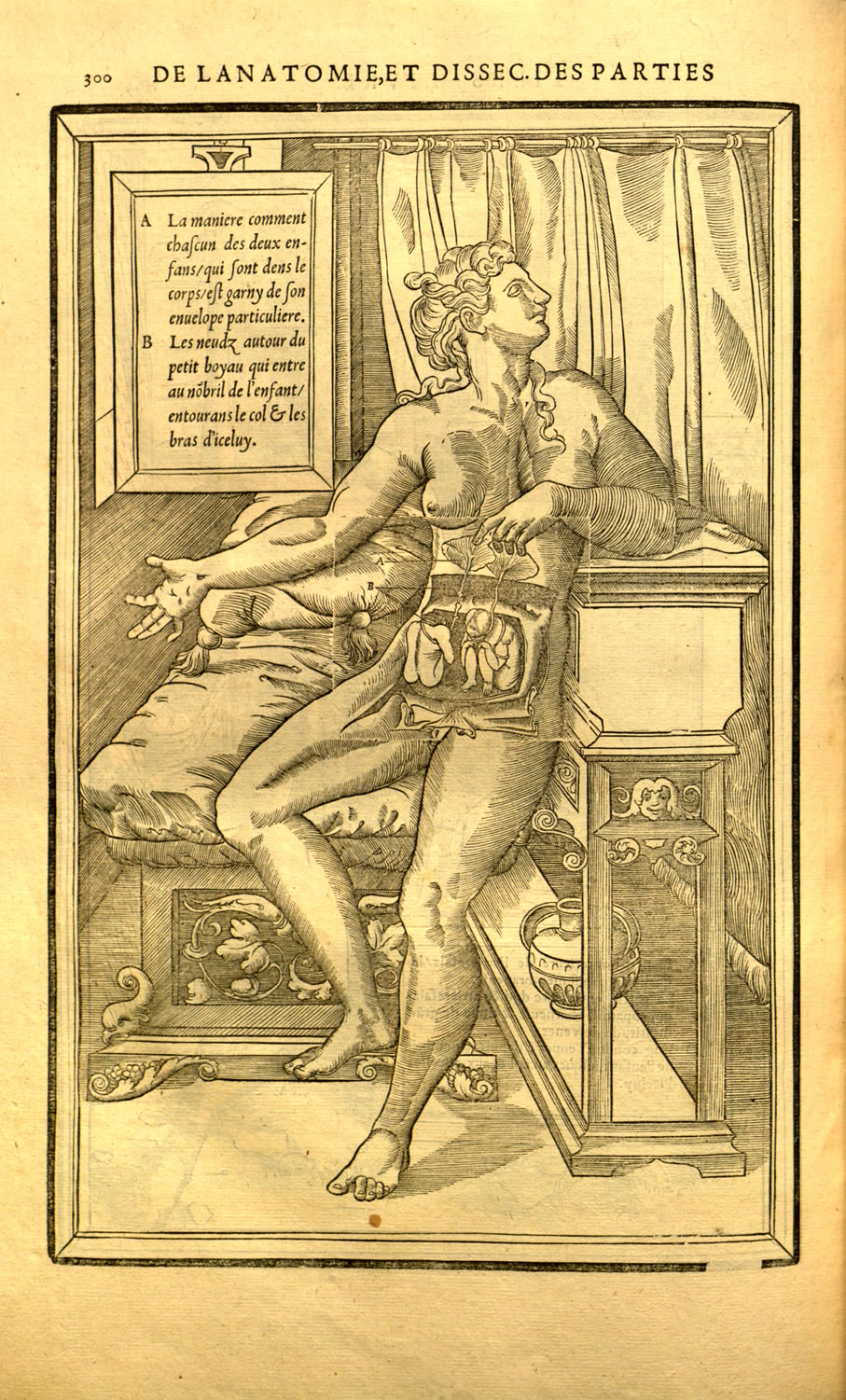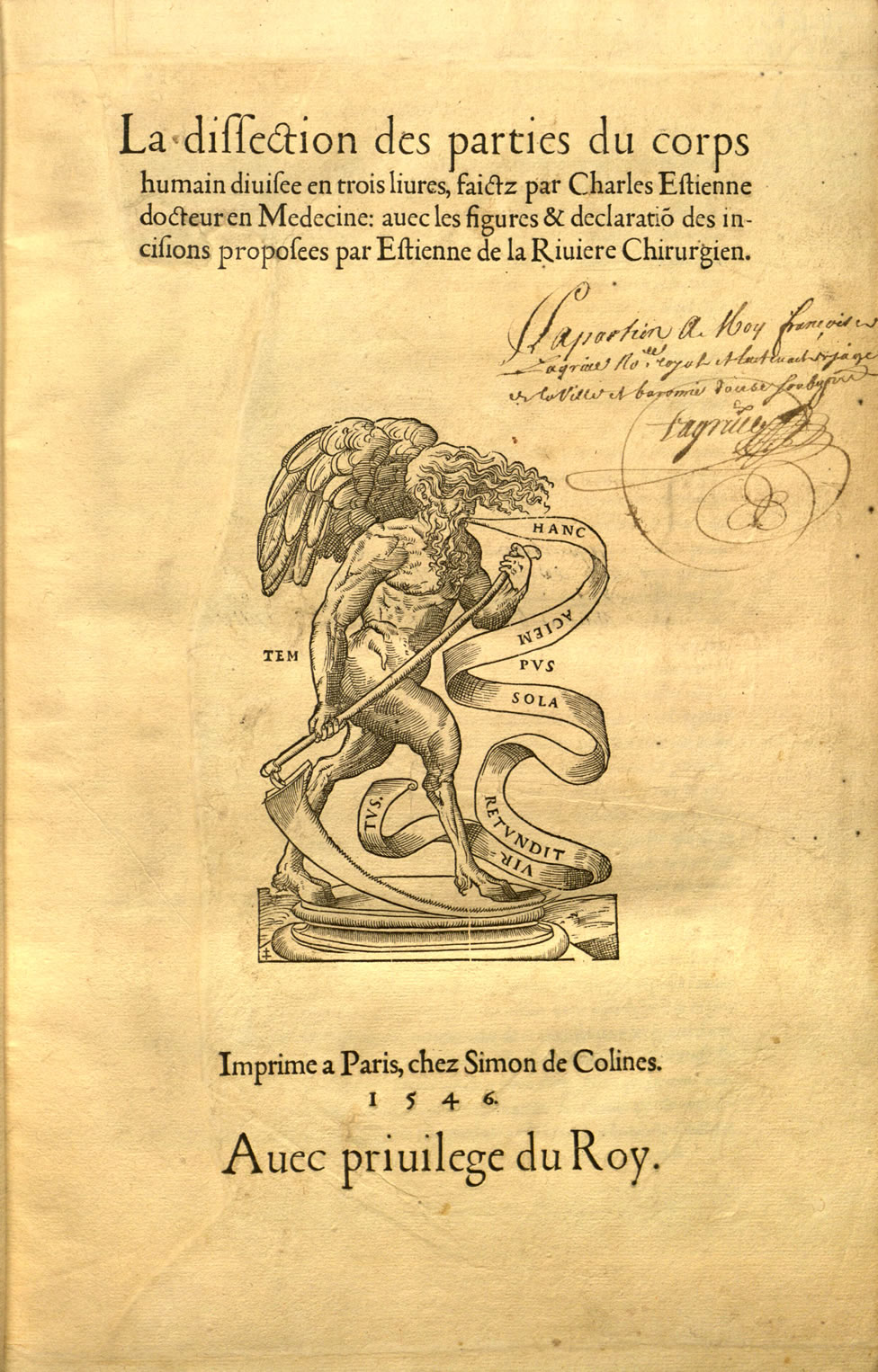Vesalius in Paris & Galenic Legacy
The medical authority that loomed over virtually all anatomical enterprises in the medieval and early modern periods was the second century Greek physician Galen (129 – c.216). Galen believed in the importance of anatomical knowledge to the physician, and his writings emphasized the importance of first-hand observation and carrying out one’s own dissections. That being said, it is unlikely that he ever dissected a human body himself, and the majority of his anatomical observations were based on his dissection and vivisection of animals, especially monkeys. This led to the inclusion of many anatomical errors in his writings, such as the assertion that humans have the rete mirabile, a mesh of blood vessels at the base of the brain.
While some of Galen’s writings survived into the medieval period, they were often incomplete, and were translated into Latin from Arabic rather than the original Greek. It was not until the end of the fifteenth century that humanist scholars began to publish the original Greek texts, culminating in 1525 with the publication of a complete edition of Galen’s works by the Aldine Press in Venice. New Latin translations began to appear from 1529 onward, starting with the translation of De anatomicis aggressionibus (Anatomical Procedures) that Jacopo Berengario da Carpi (1460-1530) helped edit and publish.
Sixteenth-century Paris was a strong center of Galenic learning, and when Vesalius arrived at the University it was in the midst of a full-fledged Galenic revival. The faculty of medicine at Paris had acquired the Aldine Press’ edition of Galen in 1526, and in 1531 Joannes Guinter’s Latin translation of the Anatomical Procedures was published by the Parisian printer Simon de Colines under the title De anatomicis administrationibus.
Guinter's Translation
Our copy of Guinter’s translation of the Anatomical Procedures was published in 1531 by Andreas Cratander in Basel. Cratander earned his baccalaureate from the University of Heidelberg in 1503, and at some point thereafter entered the print trade. He spent some time working as a compositor and corrector in the shop of Adam Petri, a printer and publisher in Basel who primarily published texts related to the Protestant Reformation, but by 1518 Cratander had established his own business. His printer’s device featured the Roman goddess of opportunity, Occasio, standing on a globe.

Cratander left the printing business in 1536 at the behest of his wife. His old equipment was bought by a group of four friends who were looking to enter the business: Thomas Platter, Balthasar Ruch, Ruprecht Winter, and Johannes Oporinus. While this partnership proved short lived, Oporinus would later go on to print the Fabrica.
On the Usefulness of the Parts
Galen’s On the Usefulness of the Parts was one of his most influential texts. It is a teleogical description of the body, meaning that it assumes each body part has been designed for a specific purpose, and therefore nothing is superfluous. It was translated into Latin by Niccolò da Reggio in the fourteenth century, and this remained the standard translation throughout the Renaissance.
Charles Estienne
Charles Estienne was born into a family of noted Parisian printers and publishers. His time as a student at the University of Padua from 1530 to 1534 gave him an interest in the natural sciences and medicine, and he eventually earned his medical degree from the University of Paris, where he and Vesalius both studied under the Galenic anatomist Jacques Dubois, also called Sylvius.
Estienne’s De dissection partium corporis humani suffered from a case of unfortunate timing. Estienne probably began working on the project while he was at Padua in the early 1530s, but it did not appear in print until 1545, two years after the publication of the Fabrica. Estienne had wanted to publish it earlier, but was thwarted by legal troubles: Étienne de la Rivière, the student of surgery who had helped create the woodcut illustrations, sued Estienne on the basis of Estienne not giving him proper credit for his contributions. This controversy dragged on for several years, and by the time it was resolved – resulting in de la Rivière’s listing as co-author – Vesalius had already published the definitive illustrated anatomical atlas.
While the illustrations in Estienne’s atlas are crude in comparison to those of the Fabrica and fail to achieve the same level of integration with the text, they are still interesting in that they represent the sixteenth-century desire to find a way to illustrate the body. The series illustrating the anatomy of the uterus is particularly noteworthy. The female figures are directly modeled from a set of erotic prints known as The Loves of the Gods, emphasizing the relationship between anatomy and eroticism.
Estienne’s atlas was published by Simon de Colines, one of the foremost printers in sixteenth-century Paris who was particularly known for the quality of his type. He also had close ties to the Estienne family. After the death of Henri Estienne in c. 1520, de Colines married his widow and ran his print shop until Henri’s son, Robert, entered the business in 1526. At that point de Colines established an independent print shop.




